Dark Skies in Galloway
Large parts of the world are so full of light pollution, at night you can barely see the brightest stars, even on the clearest of evenings. However, there are parts of this corner of Scotland which have achieved “Dark Skies” status – where you have the chance of seeing far more of the thousands of stars potentially visible by the naked eye.
Last week I drove up into the hills above Gatehouse, camera, tripod and wide-angle lens at the ready.
Unfortunately, photos of the stars on their own just aren’t that interesting (as always, feel free to click on any of the images for larger versions).
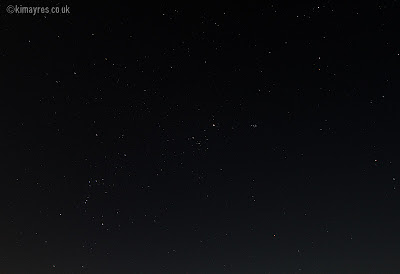
Recognisable stars, but with no real reference point
If you know what you’re looking for, you can see Orion’s belt (the 3 stars in a row in the bottom 1/3 of the left of the photo), and if you follow the line of it you can also make out Jupiter (the bright star), and the Seven Sisters (small clump that looks like a tiny saucepan). But you need a telescope attached to your camera be able to take amazing photos of something like the Horsehead Nebula.
So the reason for a wide-angle lens is to get in some of the landscape – this helps to give the stars a context. Rather than being a random set of white dots on a dark background, we can see it is a night sky and immediately imagine we are the ones standing there in the silence, with the cold air on our skins and the smell of heather and bracken in our nostrils.

Orion and Jupiter above Gatehouse of Fleet
However, the moon was out and that started to cause light pollution of its own, making the number of stars visible, much fewer. So I decided I’d try again the following night, before the moon rose.
The next evening I headed into the Galloway Forest to Clatteringshaws Loch, figuring that water and stars might make a good combination. And it was, breathtakingly beautiful – far more than I know how to capture with a camera – after all, portraits are my speciality, not landscapes.
But the biggest problem faced with taking photos by starlight is, that in order to let as much light into the camera as possible, you have to have the shutter open for a much longer time. Normal, daytime photos, are taken with shutter speeds like 1/250th of a second, but those photos above required a 30 second exposure.
And once you start getting to those times, the problem is the rotation of the Earth starts to interfere with the photography. From the time you open the shutter to the time it closes, the stars have moved, relative to us – so instead of being sharp dots, they create trails.
So if you look at the two images below. In the first, the shutter has been open for 57 seconds, and the trail effect is just starting to happen (exaggerated further at the sides of the image because of the effects of a wide-angle lens).
In the second, the shutter has been open for over 3½ minutes, but although this allows for far more of the stars to show, the star-trail effect becomes far more noticeable. It also means the orange glow of light pollution from small villages in the distance becomes more prominent – a glow usually so faint you don’t see with the naked eye.
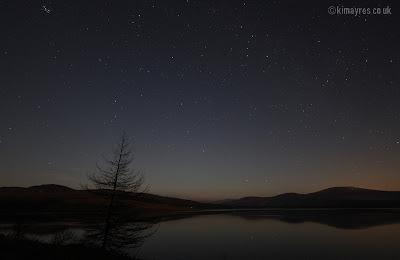
Clatteringshaws Loch - 57 second exposure
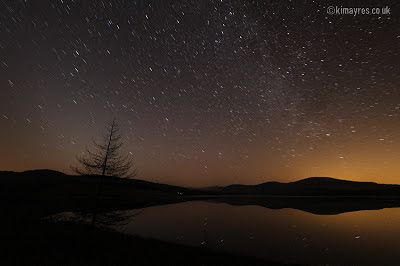
Clatteringshaws Loch - 3½ minute exposure
Eventually, after trying various combinations, the moon rose and started to create too much light pollution again. So I decided to drive round to the side of the loch and see if I could get a shot of it reflecting on the loch, and this was the result.
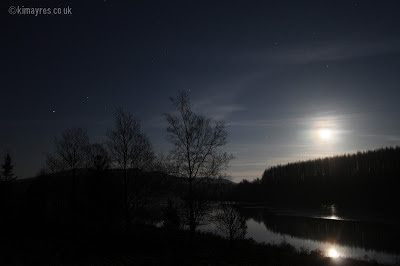
Moon over Clatteringshaws Loch
Do you live in place where you can see the stars clearly at night?

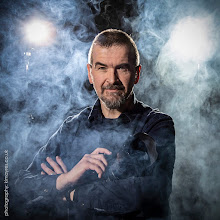




Post a Comment